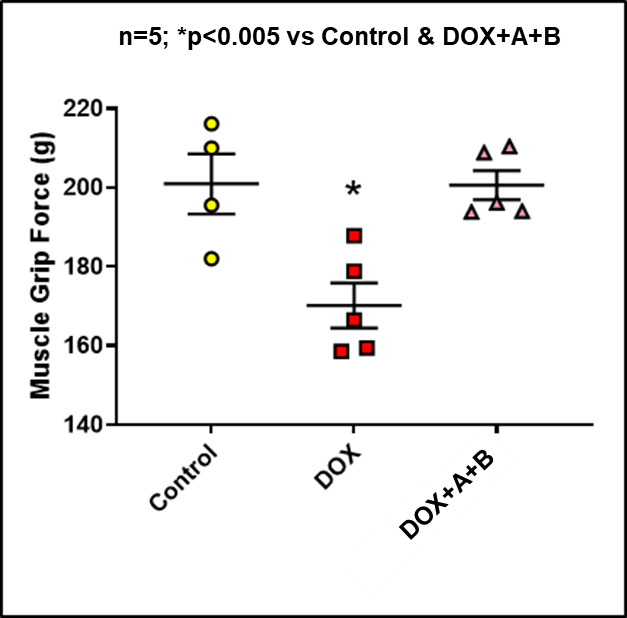Cancer Treatment
Prevention of Atrophy in Skeletal Muscle in Cancer Patients
An admixture of commercially-available drugs
Chemotherapeutics like doxorubicin (DOX) are effective agents to treat cancer, however they cause systemic inflammation and serious multi-organ side effects, particularly skeletal muscle atrophy and cachexia. Avoiding these effects of DOX treatment could improve higher tolerance to treatment, quality of life, and survival rate of patients. Current approaches to address skeletal muscle weakness and fatigue are non-pharmacologic physical rehabilitation and nutritional optimization which are largely ineffective. Thus, identifying novel treatment strategies for skeletal muscle atrophy associated with cancer chemotherapy represent a large unmet clinical need.
The technology
Researchers at VCU have developed a combination treatment method of two commercially available drugs (herein referred to as A and B). Drug A is used for treatment of pulmonary hypertension and has been shown to protect cardiac muscle following heart attack and DOX chemotherapy. Drug B has also been found to significantly reduce damage to cardiac muscle after myocardial infarctions. Based on the individual actions of both drugs on heart muscle protection post-ischemia, the admixture of both for skeletal muscle protection has shown promising results in increasing the weakened grip strength of mice post DOX treatment (Figure 1).

Figure 1. Combination treatment of A and B preserve muscle grip force following DOX treatment in mice.
